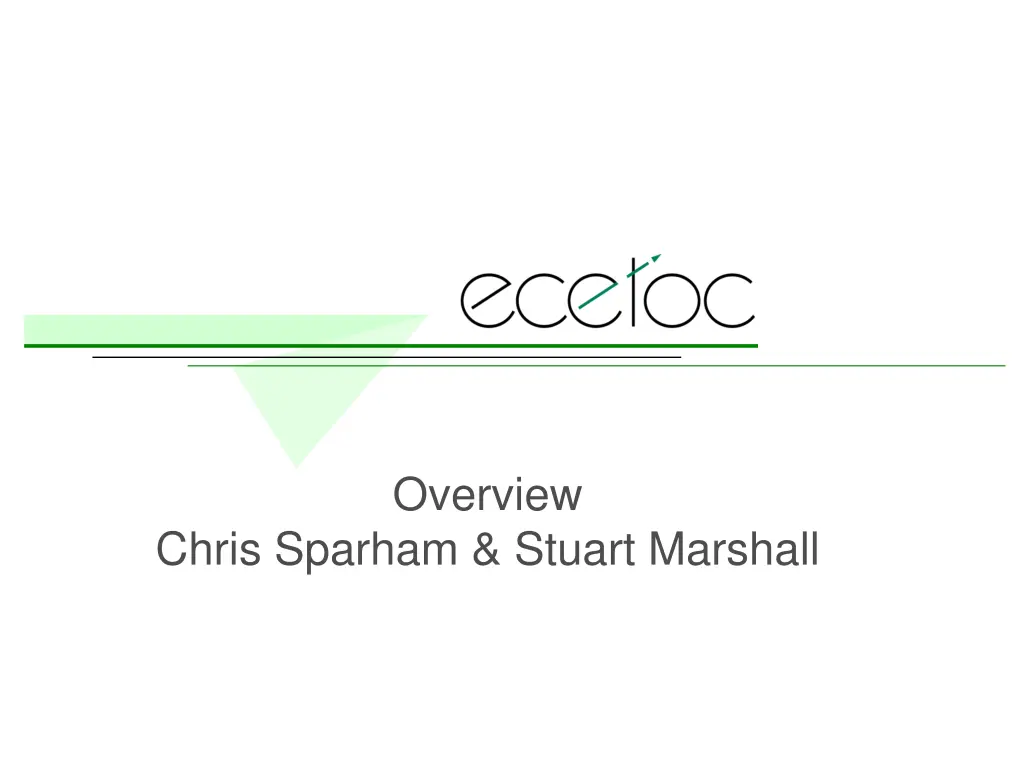
Role of ECETOC in Chemical Industry Research
ECETOC, a scientific non-profit organization, serves as a trusted resource for research needs and environmental impact assessments in the chemicals industry. Their approach involves providing scientific evidence on the effects of chemicals, risk assessment methods, and collaboration with stakeholders to ensure high-quality assessments. ECETOC focuses on 5 broad themes and pursues 13 strategic science areas. Task forces address specific needs within their strategy, such as guidance development for chemical mixtures and risk assessment approaches.
Download Presentation

Please find below an Image/Link to download the presentation.
The content on the website is provided AS IS for your information and personal use only. It may not be sold, licensed, or shared on other websites without obtaining consent from the author. If you encounter any issues during the download, it is possible that the publisher has removed the file from their server.
You are allowed to download the files provided on this website for personal or commercial use, subject to the condition that they are used lawfully. All files are the property of their respective owners.
The content on the website is provided AS IS for your information and personal use only. It may not be sold, licensed, or shared on other websites without obtaining consent from the author.
E N D
Presentation Transcript
Overview Chris Sparham & Stuart Marshall
ECETOC is a scientific, non-profit making, non-commercial trade association with a mission to act as: an independent, credible, peer-reviewed technical resource to all concerned with the identification of research needs and provision of scientific rationale for the assessment of health effects and environmental impact, and thereby to justify industry's licence and freedom to operate.
ECETOCs approach ECETOC believes that by identifying developing issues at their nascence, the chemicals industry will be better placed to undertake the appropriate scientific initiatives. What does it involve? Its particular remit is to contribute objective scientific evidence to the debate about the role of chemicals in the causality of disease and assure the process of risk assessment of these chemicals. It does so via the pursuit of the following 5 broad themes: The presence of chemicals in humans The presence of chemicals in the environment Effects on humans and ecosystems Methods The science of risk assessment. Work with other stakeholders, such as academia, regulators, associations and international institutions to ensure that objective scientific evidence is used to provide the highest quality risk assessment of chemical products that minimises wherever possible the use of animals in testing.
Within the framework of the aforementioned 5 themes, ECETOC pursues the following 13 strategic science areas: Presence of chemicals in human tissue Chemicals in indoor air Mixtures Exposure issues Sensitive sub-populations Reproductive health Biodiversity & ecosystems Intelligent/integrated testing strategies Omics & related technologies Risk assessment of innovation (nanotechnology) Role of chemicals in the causality of disease Risk, hazard, precaution Science in society
Ongoing Task Forces ECETOC task forces are established by ECETOC's Scientific Committee in response to an identified need or objective, which typically sit within the framework of its strategy. Examples: Development of guidance for assessing the impact of mixtures of chemicals in the aquatic environment Development of interim guidance for the inclusion of non-extractable residues (NER) in the risk assessment of chemicals ERA of ionisable compounds Guidance on interpreting endocrine disrupting effects within the constraints of REACH and the revised 91/414 directive Low-dose interactions Risk assessment approaches for PBT/vPvB or POPs Science needs in support of REACH Targeted risk assessment The application of critical body burden in risk assessment of SVHC Understanding the relationship between extraction technique and bioavailability






















